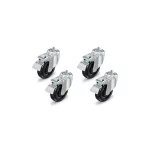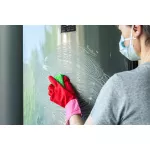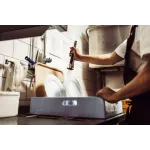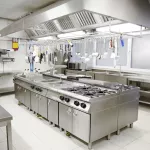Guide to Industrial Stainless Steel Cleaning
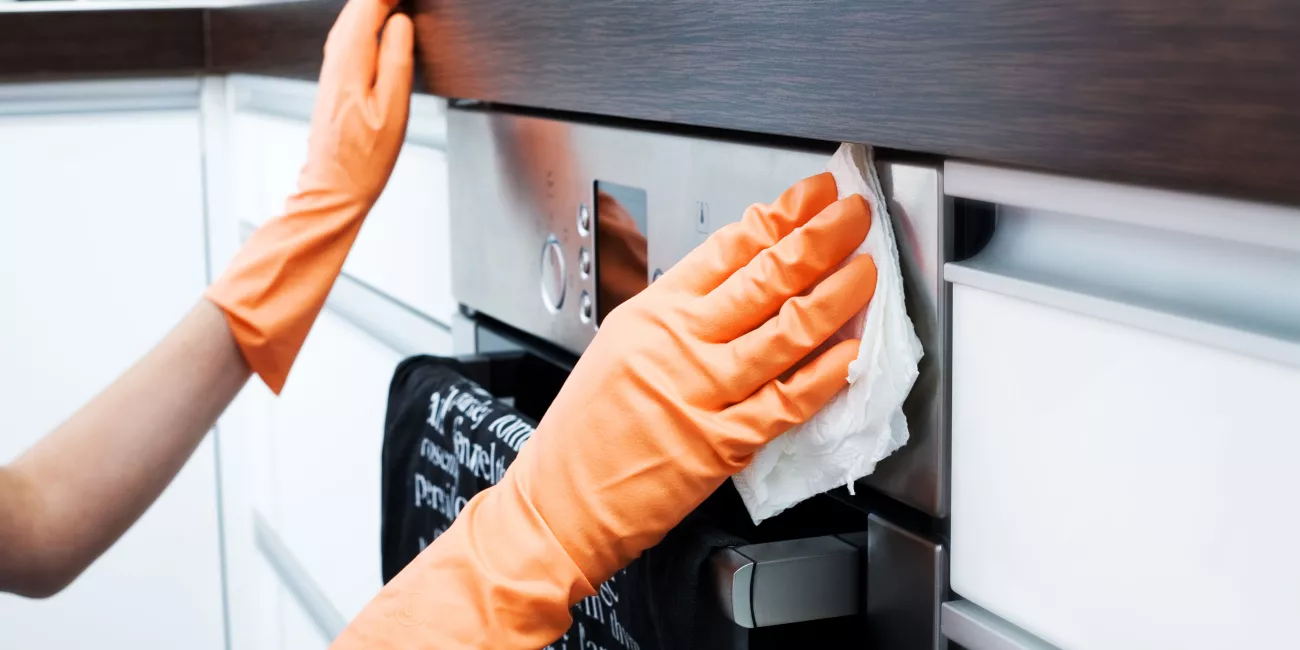
Stainless steel is often a preferred material for various industries from restaurants to workshops. This is because of how durable and long-lasting the material can be if taken care of. But just like any other material, if it is not cleaned and maintained it will eventually rust and become unusable.Keeping your stainless steel equipment clean is the best thing you can do to improve the life span of your tools and appliances.
What is Stainless Steel
Stainless steel contains metals such as chromium and nickels, unlike iron or steel which corrodes easily. There are different series or compositions of stainless steel with two of the most common ones being the 400 series and 300 series. The 300 series contains both chromium and nickel while the 400 series contains just chromium.
What is so special about stainless steel compared to other materials is that it has a thin protective layer called chromium that sits on the outside of the metal. This protective layer will react to air and creates what feels like a slick hard surface. It is also what helps it resist things such as stains or corrosion.
Things such as oil, scratches, or other dirt and grime can damage this chromium layer and will in turn cause the stainless steel surface to rust or corrode over time. This is why keeping the stainless steel surface clean is so important.
How to Clean Stainless Steel Equipment

Stainless steel equipment isn't hard to clean, but there are certain steps you can take to make sure you don't damage your equipment by accident when cleaning them.
Use the right tools for cleaning
You want to use things that won't add more scratches to your stainless steel surface while you are cleaning it. Any type of soft cloth, microfiber cloth, soft sponges, or finer grit scouring pads will work best when completing your restaurant equipment cleaning.
Clean spills right away
Any type of spill, but especially acidic ones, can damage the chromium layer if they are not taken care of immediately. When cleaning restaurant equipment and other stainless steel with messes, wipe spills with a damp cloth as soon as possible once they happen. This also makes it easier to clean later because the spill won't stain or bake onto the stainless steel surface.
Follow the polish lines
Most stainless steel has a grain that you can see on the surface that runs in one direction. When you are wiping or scrubbing the surface, you want to follow this grain. This also is true if you are trying to remove scratches from the surface with more abrasive materials.

Use the right chemicals
You want to use a commercial stainless steel cleaner that contains alkaline, alkaline chlorinated, or non-chloride chemicals on your stainless steel tables. It's always best to get cleaning chemicals that are specifically designed for cleaning stainless steel tools and equipment so you don't end up damaging your equipment. Also, remember that you want to wash any residual from these cleaners off the surface of your stainless steel because they can be harmful if left long-term on the surface.
Learn how to sanitize stainless steel
Using a specific stainless steel sanitizer during industrial stainless steel cleaning will help you keep your work surfaces clean after each use. Just remove any large debris from your stainless steel surface, rinse the area with water, and use the stainless steel sanitizer on the surface. You don't want to wipe the sanitizer off the surface, just let it air dry.
Consider the impact of hard water
Having hard water can affect stainless steel if it is left on the surface for extended periods of time. Consider getting a water softener if you have the option or just keep in mind that every time you clean your stainless steel you should be wiping the water off immediately.
Removing Rust
Stainless steel that is older and has been used for many years can and most likely will develop rust simply from use and age. If this happens, you can restore the surface by following a few simple steps.
First, determine the reason why your stainless steel surface is rusting. Is it because of water laying on the surface or maybe chemicals that are affecting the stainless steel? Determining this will help you not only fix the corrosion but avoid it in the future.
Next, get scratchless pads to physically remove the rust from the stainless steel surface. You don't want to apply any moisture to the pad, just rub the pad directly onto the surface with the grain of the steel.
Get a stainless steel cleaner commercial option such as a cleaning paste or powder made specifically for stainless steel surfaces and apply it with a soft cloth or microfiber towel. Once you have applied this, remove it using a clean soft cloth or microfiber towel with a bit of water.
It is good practice to use a stainless steel polish to help restore your steel's passive layer and remove anything on the surface that might cause corrosion.
Stainless Steel Equipment Care
Just like any other type of utility tool or appliance, you will need to take care of your stainless steel equipment. If you don???t, it can be prone to rust or aging prematurely and this can mean contamination of food, illness for workers, or structural issues that can make steel equipment fail when you least expect it.
Keep your stainless steel tools and appliances in environments that don't promote corrosion. This includes avoiding areas with high temperatures, any contact with chloride, humid air, or oxygen-depleted areas.
You also want to keep your surfaces as scratch free as possible. Not only will they look better with fewer scratches, but water and dirt can become trapped in any scratch on the surface and lead to rust.
No matter what you are using your stainless steel equipment for you should be regularly cleaning and polishing them if they are prone to scratches and stains. This keeps it free from built-up dirt or other debris and provides you with a smooth, clean work surface. The unseen part of industrial stainless steel cleaning and polishing is that it keeps the chromium oxide intact on the surface which helps to prevent rust from forming.
Ways to Remove Scratches from Your Stainless Steel Equipment
Although stainless steel is durable and meant to last against wear and tear, it isn't scratch-proof. This means you might notice small scratches start to appear over time. Luckily, if this happens to your stainless steel table or appliance that has a brushed look these scratches are not too hard to get out.
First, clean your surface thoroughly with a microfiber towel and a stainless steel polish to remove any dirt that has accumulated on the surface.
You want to use a non-abrasive cleaner and soft sponge or scouring pad so you don't end up causing more scratches. You can also do this with deeper scratches, but you have to do the additional step of using a coarser grit scouring pad to remove the scratch and then blend it in with the softer pad. You will want to wipe in the direction of the grain of your stainless steel.
Once you have all the scratches removed from your stainless steel surface, use a stainless steel polish to clean and polish the surface. If you are unsure of your ability to be able to remove scratches from your stainless steel surfaces yourself, consider calling a professional who is experienced in repairing stainless steel surfaces.
What To Avoid When Doing Industrial Stainless Steel Cleaning
Although completing industrial stainless steel cleaning of your stainless steel isn't a complex process there are a few things that you should avoid when cleaning your work surfaces.
Be wary of chlorine
Be careful when using chlorine solutions on stainless steel. They will kill any bacteria on the surface of your stainless steel, but they can also damage the chromium layer as well. Always use a cleaner specifically designed for stainless steel on your work surfaces. If you are worried about chlorine, ammonia-based solutions are better and still kill bacteria.
Avoid abrasive materials
Things such as Brillo pads or steel wool can really damage your stainless steel and leave it prone to rust. You want to use only materials that are soft on your work surfaces to avoid scratches. These include microfiber towels, soft plastic sponges, or any other flexible, soft material.
Polish should be used only in certain circumstances
While it's true you do want to polish your stainless steel surface, this should only be done if the surface has been damaged and you needed to repair it from things such as stains or scratches. Polish is actually a coating that is meant to repair any damage and will help protect scratched or stained areas from corrosion.
Wipe with the grain
Whenever you are cleaning your stainless steel you want to always wipe with the grain of the steel. This will help prevent streaking during the cleaning process. This is also true whenever you are trying to remove any scratches. Always wipe with the grain of your stainless steel.
Final Thoughts
If kept maintained and cleaned, your stainless steel surfaces will last years even under immense amounts of use. Always keep in mind that you want to use specific stainless steel products when performing industrial stainless steel cleaning on your surfaces to avoid any issues or damage to your work surfaces. By following a few simple steps, you can easily restore the look of your stainless steel tools and equipment.
Related Articles
How To Install Casters to a Work Table
Wondering how to install casters onto your stainless steel tabletop or if it is even possible for you to achieve on your own? To help professionals li..
How To Remove Scratches From Stainless Steel
Stainless steel is still a preferred material for kitchen fixtures like appliances, bread racks, kitchen prep tables, and, most importantly, sinks bec..
Restaurant Dishwashing Tips: A Comprehensive Guide to Maintaining Clean and Hygienic Utensils
In any restaurant, maintaining clean and hygienic utensils is of utmost importance. Proper dishwashing practices not only ensure customer satisfaction..
How to Set Up a Commercial Kitchen: A Step-by-Step Guide
Setting up a commercial kitchen can be an exciting and challenging endeavor. Whether you're starting a new restaurant or upgrading an existing one, ha..

